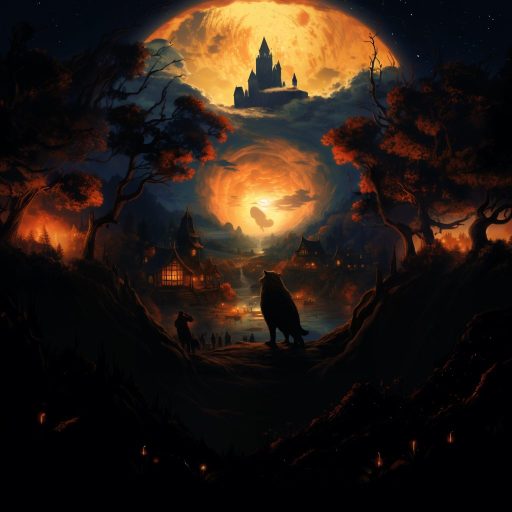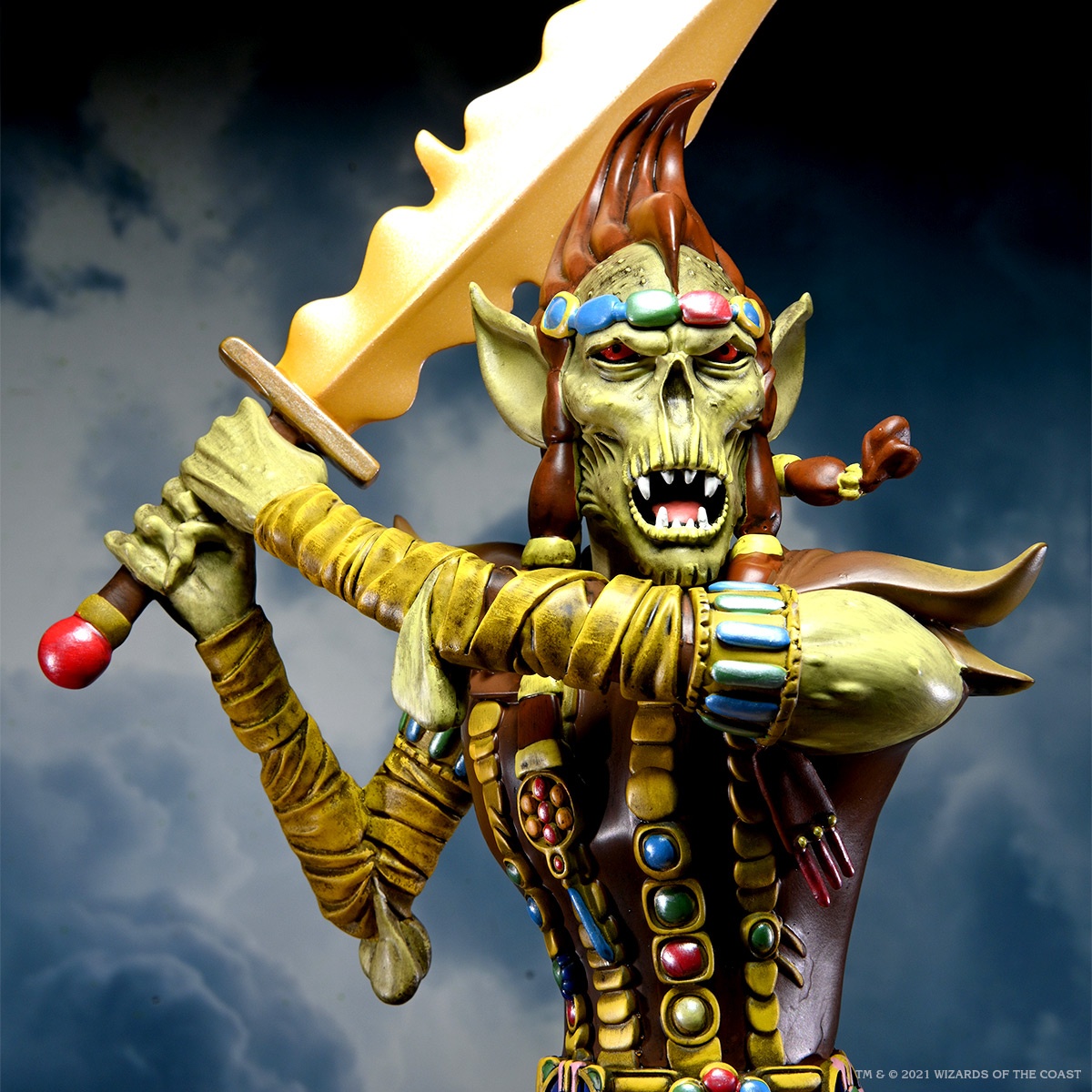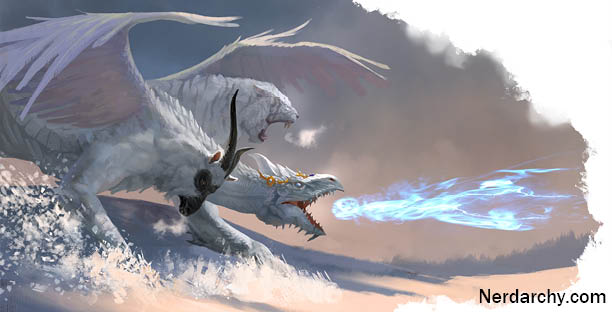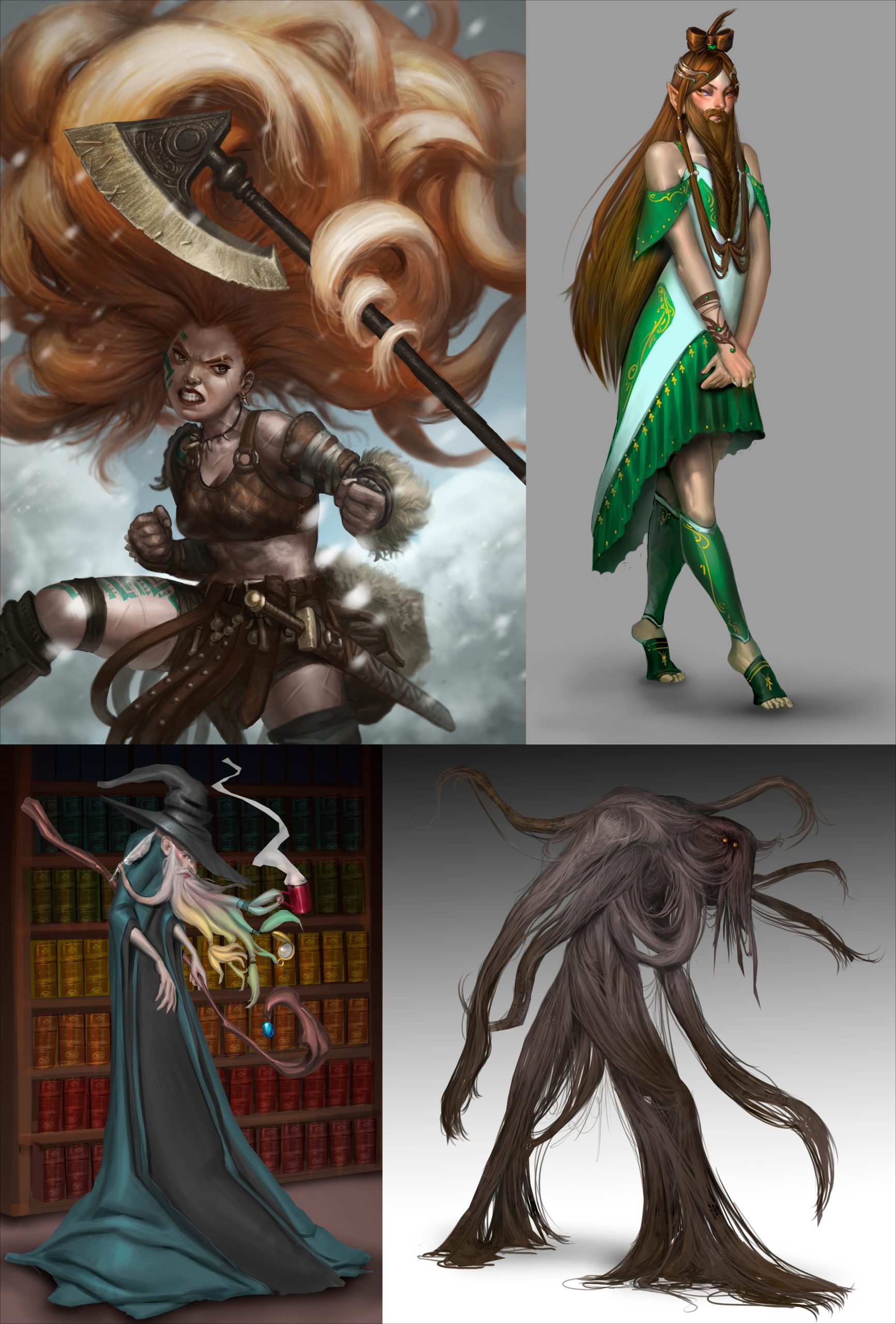
Out of the Box D&D Encounters, Series 2, #42 – “Empty Chair”
Out of the Box introduction
I cannot speak for others, but I grew up with a lot of superstitions. My mother was very superstitious, but I cannot say if it was a factor of her generation, age, culture, or what have you. All I know is that I inherited many of these superstitions, and it may have lead to my own world view. Some of them I inherited were forgotten until unlocked by an action, word, or reference. One such occurrence recently unlocked this forgotten lore.

Monastery Graveyard in the Snow, a chilling allegorical vision of a Gothic ruin, could be just the sort of painting adventurers will see on the walls of this eerie chamber. [Painting by Caspar David Friedrich]
My wife, completely innocently, showed me a new mother rocking an empty cradle in a forgetful manner. It reminded me instantly of a superstition that my mother enforced.
No one was to rock an empty chair.
She believed it invited unwelcome spirits into a home. That inspired this Out of the Box. I could see an old wooden rocking chair in a dusty room, or within the confines of a mystic’s home. This chair would unlock the use of a speak with dead spell, but at a risk. In my campaign world, there is no such thing as a magic item without a downside or risk. These items are crafted by fey, dragons, fiends, or other powerful or extraplanar creatures, so the nature of the items they craft carries some sort of residual effect.
This has two side effects. Characters tend not to abuse these items like a cherry-red easy button, and it gives these items the context and color to make them more memorable. Items like these require a little more investment by the Dungeon Master, however, as the proper setting and mood are integral to their success. Any DM willing to take on this extra work can possibly inject extra investment, as characters tend to gravitate toward the dramatic.
Environment
Urban/dungeon/tavern (wherever a rocking chair might be found)

A ghost as seen in the fifth edition Dungeons & Dragons Monster Manual. [Image courtesy Wizards of the Coast]
Level
Any (4+ recommended)
Monsters
Ghost
Treasure
Chair of Lost Souls (see below)
Description
What looks like a simple wooden door leads to this chamber. Upon the door’s outer surface was what looked like a painted sigil. This sigil was a large equilateral triangle with a perfect circle encased within. Inside the smaller corners where the circle does not extend are three different runes.
A curious character who is successful on a DC 12 Intelligence (Arcana), Intelligence (Investigation), or Intelligence (Religion) check will understand this is a protective sigil, intended as a ward against evil. What sort of evil isn’t clear. However, to the truly lucky or skilled, should this roll succeed by 5 or more, a character will notice the addition of black charcoal or soot around the door frame. This will further support an attempt made to block the entry or exit of some supernatural force through this door. Whether it has succeeded is, so far, unknown.
This may prompt a character to cast detect magic. Should they do so, a very faint glow of abjuration magic will be revealed, but it looks like a latent effect that may not still be in use.
The door is unlocked and is not trapped.
The adventurers enter a dark and dusty 20 x 30 ft. chamber, at the bottom 10 foot section of one of the 30 foot walls. The 20 foot wall to the left seems bare, apart from peeling paint in an awful shade of pastel green. What little light there is in here is provided by two lamps hung to either side of an unlit fireplace in the far 20 foot wall to their right. What looks like three odd window frames built onto or into the far 30 foot wall house what look like paintings of graveyards under a moonlit sky. The center of the floor is dominated by a large, 10 ft. diameter white pentacle inlaid into the stone floor. Small indentations or holes sit in the five outer points of the star.
A low plinth of stone, perhaps 3 ft. wide and 8 ft. long lays along the middle of the near 30 ft. wall, perhaps 10 feet to the right of the entrance to this room. A simple and very well-worn wooden rocking chair sits in the far corner by the fireplace. Resting on the chair is a small wooden box, perhaps a foot long, 8 inches wide and 4 inches tall.
Looking up, the ceiling is home to what remains of an elaborately painted hand, perhaps 8 ft. long. At the tip of each finger is an image of an eye, except for the index finger. The end of this finger is completely worn away by time and neglect.
The characters are fully free to examine this chamber at length.
A successful DC 15 Intelligence (Investigation) check of the low plinth along the right 30 ft. wall reveals faint blood stains, long dried, at the base of the platform and in some of the small cracks. This may be difficult to see in dim light. Should characters produce a bright light, this clue will be more evident and success for the check will be DC 10.
The fireplace is mundane for the most part, and appears disused for now. The black soot and ashes along the floor of the fireplace are cold and damp. The lamps to either side of the fireplace have their wicks set low, producing dim light. They will burn for another hour at this level of light before running out of oil. If the light to either lamp is turned up, the oil will run out in 30 minutes. Intense examination through success on a DC 17 Intelligence (Investigation) check of the lamp to the right of the fireplace will reveal dried traces of blood upon the wick control wheel. The lamps are hung upon small metal hooks and are removable.
Each of the three window paintings along the far 30 ft. wall show scenes of moonlit graveyards. A character who succeeds on a DC 12 painter’s supplies check will determine all three paintings were rendered by the same artist. The wooden frames are stylized to look like window frames, and the painting is, indeed, painted directly on the stone wall. Those truly looking for small details who succeed on a DC 14 Intelligence (Investigation) check will discern the paintings show three different phases of the moon in order from left to right, and show the graveyards in progression. They will notice little gravediggers in the paintings, burying the dead.
The painting on the left is the earliest rendition of the graveyard, and the one on the right is the most recent, showing the highest number of graves. A character who succeeds on a DC 17 Intelligence (Investigation) check will notice the gravediggers are not burying the dead — they are exhuming bodies from the graves.
The large white pentacle in the floor is, upon closer examination, inlaid in bone. Characters with proficiency in Intelligence (Arcana), Intelligence (Religion), Wisdom (Medicine) or Wisdom (Survival) who succeed on a DC 14 check can tell these are human bones.
The points of the 10 ft. diameter pentacle possess iron-shod holes, roughly 1 inch diameter and 1 inch deep, ringed with splashes of a substance like candle wax. A successful DC 17 Wisdom (Perception) or Intelligence (Investigation) check reveals very faint scuff or drag marks toward the corner where the chair rests.
The rocking chair is well-worn and stained by time and use. It’s built to accommodate a medium-sized humanoid, and is constructed from sturdy oak. Despite its frail-looking construction of multiple thin rails, it’s quite sturdy and seems perfectly preserved despite the neglect of late. The surface of the rocking chair seems polished by use, as if many hands wore the surface smooth over numerous years.
The small box laid upon the seat of this rocking chair seems simple and undecorated. It is made of soft wood and has simple brass hinges and an unlocked brass clasp. Should a character open it, they will discover five partially used red candles, each about 1 inch diameter and 6 inches long.
If a character casts detect magic a few details will be revealed. The white pentacle will glow faintly with abjuration magic. The low stone plinth will have a faint glow of necromancy magic. The rocking chair will glow with a magical aura and a strong sense of necromancy magic. The black charcoal or soot around the door frame will also glow faintly with abjuration magic.
The rocking chair is the chair of lost souls. How this encounter proceeds from here depends entirely on how the characters proceed. If the characters place the red candles from inside the box into the five holes of the pentacle and light them, the fireplace will light even without fuel. It will burn as a normal fire of its size as if it were the create bonfire spell cast at 1st level.
If the chair of lost souls is then placed in the center of this activated pentacle, and is rocked while empty, it will summon a ghost. The ghost should be a spirit of someone the DM has determined will hold a secret or clue, and should be a chance for the characters to advance a story. However, if the characters rock the chair of lost souls while it is empty and not within the pentacle, or within the confines of a magic circle spell, it will still summon a ghost, but the creature will be hostile. Only one ghost will be summoned either way once per day, and only at night.
Furthermore, if the characters have a dead companion or NPC’s body with them, and they lay that body upon the stone plinth and then rock the chair of lost souls while it is within the prepared pentacle, the spirit of that dead character will appear in the chair and confer the benefits of a speak with dead spell. The chair can perform this function once per day, and only at night. The chair of lost souls, if sat in and rocked, will do nothing special, except perhaps creaking in a pleasant manner. It can support the weight of a 500-pound medium humanoid.
This room was once used for this very purpose. The chair of lost souls was used to question the long dead by the original owner, but for unknown reasons. The DM can certainly build on this lore to take the story in their own direction.
Complications
Chair of lost souls
Wondrous item, very rare
Like this?
Did you enjoy this post? Nerdarchy’s awesome volunteer staff of writers and editors do their best to create engaging, useful and fun content to share. If you like what you find here on our site, consider patronizing us in a good way through Patreon.
On top of reaching our goal of paying our writers, pledging gets you exclusive monthly content for your D&D game, opportunities to game with Nerdarchy, access to patron-only channels on our Discord and more
With your generous support we’ll continue to create quality content between our YouTube channel and blog, invest in equipment to increase recording quality, and eventually create original publications and products to enhance your tabletop role-playing and gaming experience.
Thank you for your consideration and as always, until next time stay nerdy!
[amazon_link asins=’0786966246,B07BCCL5G8,1633443124′ template=’ProductCarousel’ store=’nerdarchy-20′ marketplace=’US’ link_id=’5a20c486-48b4-11e8-9e46-c9611a8a9adb’]









No Comments